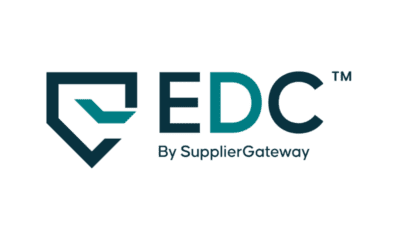Supplier data management is a task that often seems too big to tackle. When you work with hundreds or even thousands of different suppliers, keeping tabs on all of them can range from tedious to impossible.
Managing your supplier data serves many critical functions, and improper supplier data management can cost your organization more than just time and money. Bad supplier data management can expose your company to legal, reputational, regulatory, and security risks.
In other words, bad supplier data can wreck your company.
At SupplierGateway, we’ve heard the same story, time and time again.
“We use Excel and emails to cobble together supplier information.”
“I don’t know all of my supplier tax ID numbers.”
“It takes so long to get correct supplier information. Sometimes it takes us weeks to chase down the proper paperwork.”
“We use supplier questionnaires to collect information and then have to manually enter responses. It’s just not efficient.”
We know that poor data accuracy and overall data availability is a top concern for procurement and buying teams. Harvard Business Review figures that poor data accuracy costs US-based businesses upwards of $3 trillion dollars, globally. Not only is poor data accuracy costly, it’s also extremely time consuming. Additional studies report that up to 50% of procurement and buying department delays are caused by missing or inaccurate data.
Good supplier data is at the heart of any successful supplier management program. Understanding why your data is bad and learning how to fix it is a great way to increase productivity while saving time and money.
What Makes Good Data?
Ultimately, good data is useful and accessible. Data quality is generally measured by how useful the data is to the data’s user. However, this “data fitness” is lacking in nuance when dealing with supplier data. For example, your company could have large amounts of data on a certain supplier in accounts payable, but the procurement department has no quick way to access that data. Data that is useful for one department is useless to another.
Assessing Your Current Supplier Data
There are five key areas you’ll need to focus on when assessing your supplier data and how you can improve each:
- Accuracy
- Completeness
- Consistency
- Accessibility
- Usefulness
Data Accuracy
It is critical that the data collected correctly describes what it represents. This ranges from misspelling supplier names to inputting incorrect tax ID information. When your sources for supplier data are random emails and old spreadsheets, you’re bound to have inconsistent information.
Addressing data accuracy is best done by identifying a single source of information. Your single source for supplier information should be the supplier themselves, and you should be capturing supplier data via a self-service supplier onboarding portal. This data should be housed in a single area and be accessible to all departments that need it. This makes addressing data anomalies and mistakes far easier. It also makes updating the data much faster and easier for your suppliers when dealing with sign-offs, contracts, and other acknowledgements.
Data Completeness
Incomplete data can and does affect decision-making. When you don’t have the same information attribute captured for all suppliers, how can you compare them? Incomplete cost averages can cause your department to lose money; incomplete capability data can mean you’re not making the most out of a great supplier you already work with.
Regularly auditing your data can save your company a lot of time and money. You can’t fix what you don’t see. However, doing audits manually still leaves room for error. Automatically monitoring your supplier data and being alerted when important certifications or contracts are due to lapse or expire not only keeps your data current, but reduces compliance, legal, and other forms of risk for your company.
Incomplete data impacts tracking your diverse supplier spend, too. Less than 1% of all diverse suppliers have a diversity certification, so finding out diversity information on your own can be next to impossible. Data enrichment fills in these gaps—running your data through 300+ commercial and governmental databases can fill in important information and instantly increase your diverse supplier spend without having to source a single new supplier.
Data Consistency
Having consistent data across all specific entries for your suppliers sounds a little confusing, but it truly isn’t. Having consistent data means that when an entry is labeled “phone number”, that’s what’s actually listed in that data field, and that data field for a supplier’s phone number is labeled as “phone number” for every supplier.
Data consistency is always achieved by having a single source of supplier data. Data conformity can be addressed by setting specific attributes for specific data entries, and returning an error when those attributes aren’t met. Meaning that if someone enters a phone number where an email address should be, when the information is submitted, an error would be returned for the incorrect entry.
Accessibility
So, you’ve got accurate supplier data, but you can’t access it to create the report that your boss wanted on her desk three days ago. What good does all that complete data do when it can’t be accessed at all, let alone quickly?
Accessibility issues range from esoteric filing systems that no one understands to data being completely segmented with access granted to only a few key individuals. What happens when the person who created those filing systems retires, or the people who have access to specific data are out sick? When processes rely on a specific person to be completed, the process is inherently broken.
Using one centralized system for data storage and access eliminates data silos and reliance on individuals. Unfortunately, lots of supplier and data management software platforms come with very few seat licenses and charge heavily for additional seats. This means that access for an entire team, let alone company, is often financially unfeasible. Ensuring everyone who needs access to data can easily obtain it should be a priority when choosing supplier data management software.
Usefulness
Having useful and relevant data about your suppliers reduces time spent scrolling through non-applicable data fields. Relevance may also differ from department to department, so differentiating your data requirements based on supplier type can be helpful.
Asking a tool and die company for information regarding fabric fire safety is irrelevant data collection that not only wastes your time when looking for information, but wastes your suppliers’ time when they’re onboarding. Understanding what data is important to what department and grouping relevant data saves search time. Creating different onboarding workflows for your suppliers based on industry, for example, helps guarantee the questions you ask to suppliers are relevant to them and that the data you collect is useful and relevant to you.
Get Your Data In Order
When you understand what good data collection and availability looks like, you can easily see the gaps in your current supplier data management systems. Addressing your supplier data management pain points through the lenses of accuracy, completeness, consistency, accessibility, and usefulness can help you find solutions and move forward quickly and efficiently.
We know the task is huge and overwhelming, but it doesn’t have to be. SupplierGateway’s supplier management platform helps you capture and manage your supplier data in ways that produce real, measurable results.
When you’re ready to get your data in order, request a demo and make your data work for you.












